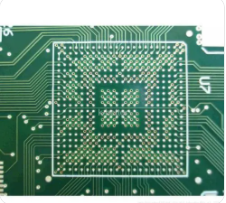The two most critical processes that help the successful repair of SMT are also the two most easily overlooked issues:
Properly preheat the PCB board before reflow;
1. Cool the solder joints quickly after reflow.
Because these two fundamental processes are often overlooked by repair technicians, in fact, sometimes the condition after repair is worse than before. Although some "rework" defects can sometimes be found by later process inspectors, they are always invisible in most cases, but they will be exposed immediately in subsequent circuit tests.
2. Warm-up-a prerequisite for successful repair
It is true that PCB processing at high temperature (315-426°C) for a long time will bring many potential problems. Thermal damage, such as pad and lead warping, substrate delamination, white spots or blistering, and discoloration. Warping and burnt boards usually attract the attention of inspectors. However, just because it will not "burn the board" does not mean that "the board is not damaged." The "intangible" damage of high temperature to PCB is even more serious than the problems listed above. For decades, countless tests have repeatedly proved that PCB and its components can "pass" the inspection and test after rework, and its attenuation speed is higher than that of normal PCB boards. This kind of "invisible" problems such as internal warpage of the substrate and the attenuation of its circuit components come from the different expansion coefficients of different materials. Obviously, these problems will not be self-exposed, even when the circuit test is started, they are not found, but they are still lurking in the PCB assembly.
Although it looks good after "repair", it is like a saying that people often say: "The operation was successful, but the patient died unfortunately." The cause of huge thermal stress, when PCB components at room temperature (21°C) suddenly come into contact with a soldering iron, desoldering tool or hot air head with a heat source of about 370°C for local heating, there will be a temperature difference of about 349°C for the circuit board and its components. Change, produce "popcorn" phenomenon.

Where is the key technology when reworking PCB
"Popcorn" phenomenon refers to the phenomenon that the moisture present in an integrated circuit or SMD inside the device is rapidly heated during the repair process, which causes the moisture to expand and cause micro-cracking or cracking. Therefore, the semiconductor industry and circuit board manufacturing industry require production personnel to shorten the preheating time as much as possible before reflow, and quickly rise to the reflow temperature. In fact, the reflow process of PCB components already includes a preheating stage before reflow. Regardless of whether the PCB factory uses wave soldering, infrared vapor phase or convection reflow soldering, each method generally requires preheating or heat preservation treatment, and the temperature is generally 140-160°C. Before the implementation of reflow soldering, a simple short-term preheating of the PCB can solve many problems during rework. This has been successful for several years in the reflow soldering process. Therefore, the benefits of preheating the PCB assembly before reflow are manifold.
Since the preheating of the board will reduce the reflow temperature, wave soldering, IR/vapor phase soldering and convection reflow soldering can all be soldered at about 260°C.
3. The benefits of preheating are multifaceted and comprehensive
First, preheating or "heat preservation" of the components before starting to reflow helps to activate the flux, remove oxides and surface films on the surface of the metal to be welded, as well as the volatiles of the flux itself. Accordingly, this cleaning of activated flux just before reflow will enhance the wetting effect. Preheating is to heat the entire assembly below the melting point of the solder and the reflow temperature. This can greatly reduce the risk of thermal shock to the substrate and its components. Otherwise, rapid heating will increase the temperature gradient in the component and cause thermal shock. The large temperature gradient generated inside the component will form thermo-mechanical stress, which will cause these materials with low thermal expansion rate to embrittle, cause cracks and damage. SMT chip resistors and capacitors are particularly vulnerable to thermal shock.
In addition, in PCB design, if the entire assembly is preheated, the reflow temperature and reflow time can be reduced. If there is no preheating, the only way is to further increase the reflow temperature or extend the reflow time. Either method is not suitable and should be avoided.